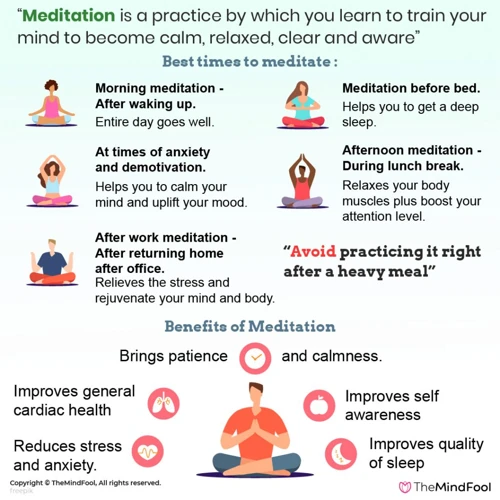As we navigate through our daily lives, stress and anxiety seem to dominate our thoughts and emotions. Sometimes, it can be difficult to find peace and balance amidst the chaos. Kundalini meditation offers a way to quiet the mind, reduce stress, and tap into a deeper sense of awareness. Perhaps you’re wondering what Kundalini meditation is, or maybe you’ve heard of it and are not sure how to incorporate it into your daily routine. Don’t worry – in this article, we’ll explore the benefits of Kundalini meditation, how to easily incorporate it into your life, and offer tips for beginners and those who may encounter challenges along the way. So, if you’re ready to explore this transformative practice, let’s dive in.
Benefits of Kundalini Meditation
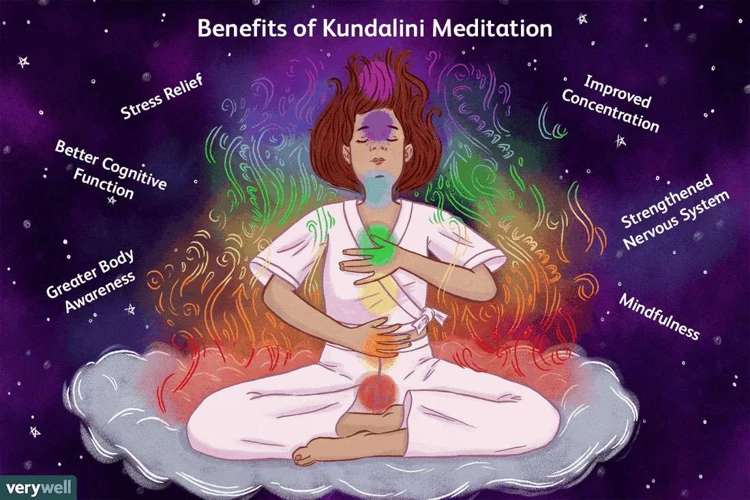
When it comes to meditation practices, Kundalini has gained popularity for its unique approach and powerful benefits. By tapping into our inner energy and raising it through different chakras, Kundalini meditation has been known to cultivate increased awareness, reduced stress and anxiety levels, and improved physical health. These benefits are not only achievable but also backed by science, making Kundalini a promising addition to your daily routine. So, how exactly does this spiritual practice affect our well-being? Let’s explore further.
Increased Awareness
Kundalini meditation has been shown to increase one’s overall awareness both of themselves and of their surroundings. This heightened sense of awareness can lead to a better understanding and management of one’s emotions and reactions to various situations. Additionally, it can also improve one’s ability to focus and concentrate on tasks.
| Benefits of Increased Awareness from Kundalini Meditation |
|
Taking the time to practice Kundalini meditation every day can lead to a greater sense of awareness and mindfulness in all aspects of life. Whether it’s during work or personal time, having an increased ability to focus and regulate emotions can lead to more productive and fulfilling experiences.
Reduced Stress and Anxiety
Kundalini meditation has been found to be especially effective in reducing feelings of stress and anxiety. By practicing Kundalini meditation regularly, you may find yourself feeling more relaxed and calmer overall. Here are some specific ways in which Kundalini meditation can reduce stress and anxiety:
- Increased Mindfulness: The act of practicing Kundalini meditation requires mindfulness, which is the state of being aware of and present in the moment. By focusing on the breath and body sensations during meditation, you train your brain to be more mindful throughout the day. This can lead to a decreased sense of stress and anxiety, as you are better able to stay present and in control of your thoughts and emotions.
- Lowered Cortisol Levels: Cortisol is a hormone that is released in response to stress. When cortisol levels are chronically elevated, it can lead to negative health outcomes such as weight gain, high blood pressure, and decreased immunity. Kundalini meditation has been shown to lower cortisol levels, which can lead to a reduced sense of stress and anxiety.
- Decreased Rumination: Rumination is the act of repeatedly thinking about negative thoughts or experiences. This can lead to feelings of stress and anxiety. Kundalini meditation can help decrease rumination by increasing self-awareness and building a healthier relationship with your thoughts.
- Improved Mood: Practicing Kundalini meditation has been linked to improved mood and decreased symptoms of depression. By focusing on breath and body sensations during meditation, you may find that you are better able to regulate your emotions throughout the day.
- Increased Sense of Calm: The deep relaxation and sense of inner peace that comes with Kundalini meditation can help you feel calmer and more grounded in your daily life. Over time, this can lead to a reduced sense of stress and anxiety overall.
Incorporating Kundalini meditation into your daily routine may be a beneficial step towards reducing feelings of stress and anxiety. By building a consistent practice and staying present in the moment, you can cultivate a sense of calm and inner peace that supports your overall wellbeing.
Improved Physical Health
Kundalini meditation is not just beneficial for mental and emotional well-being but also for physical health. Regular practice of this form of meditation has shown significant improvement in various physical conditions.
Below is a table outlining some of the physical benefits that come with a regular Kundalini meditation practice.
| Benefit | Description |
| Increased energy levels | Practicing Kundalini meditation regularly helps to boost energy levels and overall vitality. |
| Better sleep | Regular practice of Kundalini meditation helps to improve sleep quality, making you feel more rested and rejuvenated. |
| Reduced pain and inflammation | Kundalini meditation has shown to be effective in reducing pain and inflammation in the body. |
| Improved immune system | People who practice Kundalini meditation regularly have shown to have a stronger immune system, making them less likely to be affected by illnesses. |
| Lower blood pressure | Regular practice of Kundalini meditation has shown to lower blood pressure levels, leading to better heart health. |
| Better digestion | Practicing Kundalini meditation has shown to improve digestion and eliminate digestive issues like bloating. |
| Reduced tension headaches and migraines | Kundalini meditation helps to relieve tension in the body, which can reduce the frequency and intensity of tension headaches and migraines. |
Incorporating Kundalini meditation into your daily routine can help you experience these physical benefits and improve your overall health and well-being.
Ways to Practice Kundalini Meditation Daily
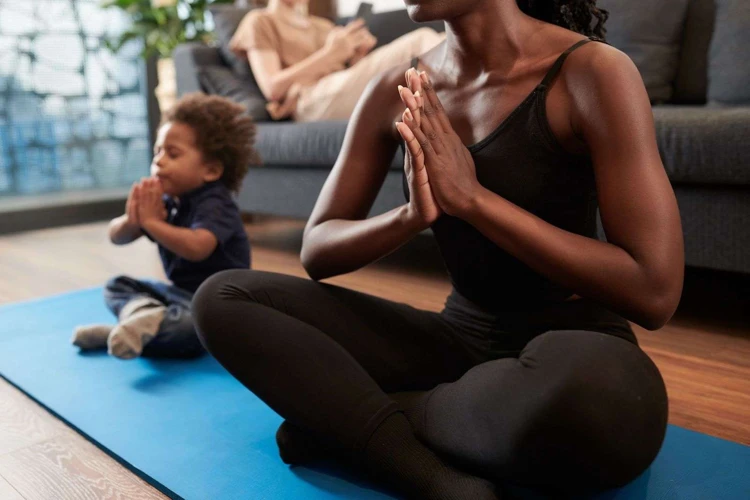
Now that we have learned the benefits of Kundalini Meditation, let’s explore some practical ways to incorporate it into your daily routine. With these simple yet effective techniques, you can easily integrate Kundalini Meditation into your busy schedule and reap the rewards of this powerful practice. Take a look at these suggestions and find the ones that work best for you to start your daily Kundalini Meditation practice.
Morning Meditation
Morning is the best time to start your day with Kundalini meditation. It sets the tone for the rest of your day and helps you stay focused and centered throughout. Here are some ways you can incorporate Kundalini meditation into your morning routine:
| Step 1: | Start Early: |
| Try to wake up at least 30 minutes earlier than usual to give yourself enough time for your morning Kundalini meditation practice. It is best to do it first thing in the morning, before any distractions or demands of everyday life can interfere. | |
| Step 2: | Wash Up: |
| Wash your face, brush your teeth, and take a shower before starting your Kundalini meditation practice. This helps you feel fresh and ready to focus on your meditation. | |
| Step 3: | Choose a Comfortable Spot: |
| Find a comfortable spot to sit in. You can sit on a pillow or cushion on the floor with your legs crossed, or you can sit on a chair with your feet flat on the floor. Any spot where you can sit comfortably and maintain good posture will work well. | |
| Step 4: | Set Your Intentions: |
| Set your intentions for the day before starting your Kundalini meditation practice. Visualize yourself achieving your goals, staying focused, and handling any challenges that come your way. This helps you stay centered throughout your day and keeps your mind clear and focused. | |
| Step 5: | Begin Your Kundalini Meditation Practice: |
| Start with some warm-up exercises to prepare your body for the Kundalini meditation practice. These exercises can include stretching, deep breathing, or even a few yoga poses. Then, start your Kundalini meditation with your eyes closed and your focus on your breath. You can use mantras or visualizations to help you stay focused during your meditation. | |
| Step 6: | End with Gratitude: |
| Finish your Kundalini meditation practice with a moment of gratitude. Take a few deep breaths and visualize your day going well. Think about all the things you are grateful for in your life, including your health, family, friends, and accomplishments. This helps you start your day on a positive note and sets the tone for a successful day. |
Incorporating Kundalini meditation into your morning routine can help you start your day with a clear mind and a sense of purpose. With a consistent practice, you can experience greater awareness, reduced stress and anxiety, and improved physical health.
Afternoon Break Meditation
Taking a break in the afternoon is a great way to recharge your energy and focus for the remainder of the day. Inserting a Kundalini meditation practice during your afternoon break can bring many benefits, such as increased productivity, creativity, and mental clarity. Here are some steps you can take to incorporate Kundalini meditation into your afternoon break routine.
| Step 1: | Set aside 10-15 minutes in your schedule for your afternoon break meditation. This can be done either in your office or in a quiet and peaceful place you find nearby. |
| Step 2: | Get comfortable. Sit on a chair or on the floor with a cushion, whichever is more comfortable for you. Place your palms facing up on top of your knees. |
| Step 3: | Close your eyes and take a few deep breaths. Inhale deeply and exhale fully, releasing any tension or stress from your body. |
| Step 4: | Start by doing some simple warm-up exercises to get your blood flowing. Do neck rolls, shoulder shrugs, and other movements that feel good for your body. |
| Step 5: | Select a Kundalini meditation that resonates with you. There are many Kundalini meditations that can help you focus, reduce stress, and balance your energy. You can choose one that specifically targets the areas you need help with, or simply choose one that you enjoy. |
| Step 6: | Follow the instructions for your chosen Kundalini meditation. This may include chanting a mantra, focusing on your breath or a specific point, or doing specific hand movements. |
| Step 7: | Conclude your meditation by taking a few deep breaths and bringing your awareness back to your surroundings. Take another moment to appreciate the peace and clarity you have achieved. |
Taking an afternoon break meditation can be a simple yet effective way to incorporate Kundalini meditation into your daily routine. By taking even just a few minutes to clear your mind and focus your energy, you can increase your productivity and overall well-being.
Evening Meditation
After a long day of work or school, it can be challenging to unwind and relax. That’s where evening meditation can come in as a helpful tool for calming the mind and preparing for a restful night’s sleep. Here are four tips for incorporating evening meditation into your daily routine:
| Tip | Description |
|---|---|
| 1. Set the Mood | Creating a calming atmosphere is key to an effective evening meditation. Dim the lights, light candles or incense, and play soft music to help ease your mind and promote relaxation. |
| 2. Release the Day | Before beginning your meditation, take a few moments to reflect on your day. Acknowledge any stress, anxiety or worries that you may have encountered, and release them with each exhale. Turn your focus towards peace and calm. |
| 3. Focus on Breath | Breathing exercises can be incredibly beneficial for calming the body and mind. Try focusing on longer, deeper breaths, and allow yourself to sink deeper into relaxation with each exhale. Concentrate on the sensation of the breath moving in and out of your body. |
| 4. End with Gratitude | As your meditation comes to an end, take a few moments to feel grateful for your day and your life. Think about the positive moments and what you may have learned from the challenging ones. Offering gratitude can help set the tone for a peaceful and restful night. |
Incorporating evening meditation into your routine can be an excellent way to promote relaxation and prepare for a restful night’s sleep. Experiment with different techniques and lengths of meditation to find what works best for you. Remember to be patient with yourself and enjoy the process of discovering the benefits of evening meditation.
Easily Incorporate Kundalini Meditation into Your Life
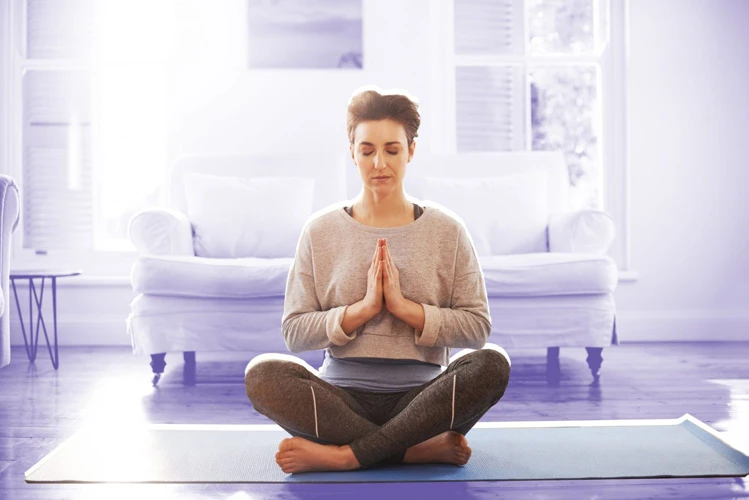
Integrating Kundalini meditation into your daily routine may seem like a daunting task, but it doesn’t have to be. There are various ways to make this practice easily accessible and convenient in your everyday life. By using guided meditations, integrating it with yoga practice, and making a habit of it, you can successfully incorporate Kundalini meditation into your life without disrupting your current schedule. Let’s explore these methods further.
Use Guided Meditations
One way to easily incorporate Kundalini meditation into your daily routine is to use guided meditations. Guided meditations are pre-recorded audio or video sessions that walk you through the practice step-by-step. This is a great option for beginners or those who have trouble focusing during their meditation practice.
Benefits of guided meditations:
- Help you stay focused: With guided meditations, you have a voice to guide you through your practice, making it easier to stay focused on your breath and meditation.
- Reduce stress and anxiety: Guided meditations often include relaxing music and calming visualizations, which can help reduce stress and anxiety.
- Learn something new: Many guided meditations include teachings and insights from experienced practitioners, allowing you to deepen your understanding of Kundalini meditation.
Tips for using guided meditations:
- Find a reputable source: There are many free guided meditations available online, but it’s important to find a reliable source with experienced teachers and high-quality recordings.
- Choose a length that works for you: Guided meditations can range from a few minutes to an hour or more. Choose a length that works for you and your schedule.
- Experiment with different styles: Different teachers and styles of guided meditations may resonate with you more than others. Don’t be afraid to try out a few different options until you find one that works for you.
Using guided meditations can be a great way to incorporate Kundalini meditation into your daily routine, especially if you’re just starting out. It allows you to learn from experienced practitioners, stay focused during your practice, and deepen your understanding of this ancient tradition.
Integrate It with Yoga Practice
One way to easily incorporate Kundalini meditation into your daily routine is to integrate it with your yoga practice. Yoga and meditation go hand in hand, as both practices promote overall well-being and cultivate a deeper sense of self-awareness. By combining the two, you can enhance the benefits of both practices.
Here are some ways to integrate Kundalini meditation with your yoga practice:
- Add meditation to your yoga routine: After completing your usual yoga routine, take a few moments to sit in silence and meditate. This can be a great way to help clear your mind and fully relax your body after your workout.
- Use mantras during your yoga practice: Incorporate Kundalini mantras into your yoga practice to help focus your mind and deepen your spiritual connection. This can help you stay present and mindful throughout your practice.
- Practice kriyas: Kriyas are sets of movements and breathwork that are designed to stimulate energy flow and enhance spiritual awareness. Incorporating kriyas into your yoga practice can be a powerful way to integrate Kundalini meditation into your routine.
- Take a Kundalini Yoga class: If you are new to Kundalini meditation, taking a Kundalini Yoga class can be a great way to get started. These classes often combine yoga, meditation, and breathwork to promote physical, mental, and spiritual well-being.
By integrating Kundalini meditation with your yoga practice, you can deepen your spiritual connection and cultivate a sense of inner peace and clarity. Give it a try and see how it enhances your overall well-being.
Make a Habit of It
Incorporating Kundalini meditation into your daily routine requires making it a habit. Here are some tips to help you make Kundalini meditation a habitual practice in your life:
1. Set a consistent time: Choose a specific time of day that works best for you and stick to it. This will help make Kundalini meditation a regular part of your schedule.
2. Start small: Begin with shorter meditation sessions, focusing on building consistency and gradually increasing the duration over time as you become more comfortable and experienced.
3. Use reminders: Set reminders on your phone or computer to encourage you to meditate. You can also create a dedicated meditation space in your home to remind you to practice daily.
4. Find a partner: Partnering up with a friend or family member who also practices Kundalini meditation can help hold you accountable and make the practice feel more enjoyable.
5. Keep a journal: Track your progress and experiences in a journal. Reflecting on your practice can help you identify patterns and areas of growth, ultimately strengthening your commitment to the practice and enhancing the benefits you receive from it.
6. Be patient: Remember that making Kundalini meditation a habit takes time and effort. Don’t get discouraged if you miss a day or find it challenging at first. The more consistently you practice, the easier it becomes to incorporate into your daily routine.
How to Prepare for Kundalini Meditation

Preparing for Kundalini meditation is an essential step to ensure a productive experience. When it comes to meditation, finding the right environment and mindset is key. It’s important to create a comfortable space where you can relax and focus on your breath. By setting positive intentions and creating a peaceful atmosphere, you can help elevate your Kundalini practice to new heights. In this section, we’ll explore some tips and techniques to help you prepare for your Kundalini meditation sessions.
Find a Comfortable Place to Sit
When preparing for Kundalini meditation, it’s important to find a comfortable and quiet place to sit. This will allow you to fully focus on the meditation, without any distractions or discomfort. Here are some tips to help you create the perfect meditation space:
| Tip | Description |
| 1 | Choose a quiet space. Find a space where you won’t be disturbed by noise or distractions. This could be a quiet room in your home or a peaceful outdoor area. |
| 2 | Make it comfortable. Choose a comfortable cushion or chair to sit on, so that your body is well-supported. You might also want to add some blankets or pillows to make the space more cozy. |
| 3 | Set the mood. Consider dimming the lights, lighting a candle or some incense, or playing some gentle music to help set the mood and create a relaxing atmosphere. |
| 4 | Avoid distractions. Turn off your phone or any other electronic devices that might interrupt your meditation practice. You might also want to consider placing a “do not disturb” sign on the door to let others know that you are meditating. |
Finding a comfortable place to sit is just the first step in preparing for Kundalini meditation. By creating a peaceful and comfortable space, you’ll be able to fully immerse yourself in the practice and reap the many benefits of this powerful meditation technique.
Set Your Intentions
As you prepare for your Kundalini meditation practice, it’s important to set your intentions. This means identifying what you hope to achieve through your meditation session. Setting intentions can help you focus your mind and gain greater clarity and insight.
To set your intentions, consider what you want to work on or achieve in your life. Maybe you would like to cultivate greater compassion towards others, reduce stress and anxiety, or tap into your inner wisdom. Once you have identified your intention, hold it in your mind throughout your meditation practice. This will help you stay focused and bring a greater sense of purpose to your practice.
Here’s an example of how to set your intentions using an html table:
| Step | Description |
|---|---|
| Step 1: | Take a moment to reflect on what you hope to achieve through your meditation practice. This could be a specific goal or something more general like finding greater peace and clarity in your life. |
| Step 2: | Once you have identified your intention, create a simple phrase or sentence that captures it. For example, if your intention is to cultivate greater compassion, you might create a phrase like “May I become more aware of the suffering of others and respond with empathy and kindness.” |
| Step 3: | Repeat your intention to yourself silently or aloud a few times to solidify it in your mind. |
| Step 4: | Hold your intention in your mind throughout your meditation practice. If you find that your mind wanders, gently bring your attention back to your intention and use it as a focal point for your practice. |
Setting your intentions before you begin your Kundalini meditation practice can help you to deepen your experience and get the most out of your practice. By focusing your mind, you can gain greater clarity and insight into your life and cultivate positive qualities like compassion and inner peace.
Focus on Your Breath
During Kundalini meditation, focusing on your breath is a crucial aspect of the practice. This helps to calm the mind and bring your awareness into the present moment. Here are some tips to help you effectively focus on your breath during your meditation practice:
- Start by sitting comfortably and taking a few deep breaths to center yourself.
- Pay attention to the sensation of the breath as it enters and exits through your nostrils. You may also choose to focus on the rise and fall of your chest and belly.
- Acknowledge any thoughts or distractions that arise during your meditation, but try not to get caught up in them. Simply bring your focus back to your breath.
- Try counting your breaths to help you stay focused. For example, inhale for a count of four, hold for two, and exhale for a count of four.
- As you become more comfortable with focusing on your breath, you may wish to try incorporating mantras or affirmations into your practice.
- Remember that the goal of Kundalini meditation is not to banish all thoughts, but rather to develop awareness and observe the flow of thoughts without getting entangled in them.
By making an effort to focus on your breath during Kundalini meditation, you’ll train your mind to become more present and focused. Over time, this practice can help reduce stress and anxiety, and unlock a sense of inner calm and peace.
Kundalini Meditation for Beginners

If you’re new to Kundalini Meditation, getting started can feel overwhelming. But don’t worry, even experienced meditators had to start somewhere. In this section, we’ll cover some tips for beginners to help you ease into your Kundalini practice with confidence and curiosity. Embrace this new experience with an open mind and an open heart, and you’ll quickly reap the many benefits of a daily Kundalini Meditation practice.
Start with Shorter Sessions
One important tip for beginners interested in incorporating Kundalini meditation into their daily routine is to start with shorter sessions. It can be tempting to jump right in and try to meditate for a long time, but it’s important to build up your practice gradually.
To do this, try starting with just a few minutes of meditation each day. You can gradually increase the amount of time you spend meditating as you become more comfortable with the practice.
Here are some tips for starting with shorter sessions:
- Set a timer for your meditation session – this will help you stay focused and prevent you from getting too caught up in the experience.
- Choose a time of day when you’re less likely to be interrupted or distracted, such as early morning or late at night.
- Find a quiet, comfortable place where you can sit undisturbed for a few minutes.
- Use a mantra, such as “Sat Nam,” to help you focus your mind and stay present during your meditation.
- Remember that it’s okay to have thoughts pop up during your practice – just acknowledge them and then gently return your focus to your breath or your mantra.
Starting with shorter sessions can help you build a consistent practice and make it easier to fit meditation into your busy schedule. So don’t feel like you have to meditate for hours at a time – even just a few minutes a day can make a big difference in your overall well-being.
Don’t Worry About Doing It Perfectly
One of the most common challenges that beginners face with Kundalini meditation is the pressure to perform perfectly. It’s important to remember that meditation is not about achieving perfection or even specific results. Instead, it’s about setting intentions, cultivating a consistent practice, and being open to the experience, no matter what arises.
Here are a few tips to keep in mind as you begin your Kundalini meditation practice:
- Be Patient with Yourself: Remember that meditation is a skill, and it takes time to develop. Allow yourself to grow and evolve at your own pace, without the pressure to do it perfectly from the start.
- Recognize and Release Judgment: When you notice judgment or criticism arising, recognize it and release it. Don’t attach to the thoughts or emotions that come up during your meditation practice.
- Let Go of Expectations: It’s natural to have expectations for what your meditation practice should look like. However, these expectations can create unnecessary stress and pressure. Instead, approach your practice with an open mind and allow it to unfold as it will.
- Focus on the Journey, Not the Destination: Kundalini meditation is not about achieving a certain goal or outcome. Instead, it’s about the journey of self-discovery and growth. Enjoy the process of discovering more about yourself and your inner world.
Remember, meditation is a personal practice, and there is no one “right” way to do it. Don’t be too hard on yourself if you struggle or don’t feel like you’re doing it correctly. With persistence and an open mind, you will cultivate a deeper connection with yourself and the world around you.
Be Open to the Experience
When it comes to Kundalini meditation, it’s important to keep an open mind and be receptive to the experiences that you may have during your practice. This means letting go of any preconceived notions about the practice and being present in the moment. Being open to the experience is crucial for allowing yourself to fully benefit from Kundalini meditation.
During your meditation, you may experience a wide range of sensations, emotions, and thoughts. It’s important to approach these experiences with curiosity and non-judgment. Avoid labeling these experiences as good or bad, and instead observe them with detachment.
One way to help you stay open and receptive is to practice mindfulness. This involves focusing your attention on the present moment without judgment. By developing mindfulness during your Kundalini meditation practice, you can become more aware of your thoughts, feelings, and bodily sensations. Mindfulness can also help you cultivate a sense of acceptance and openness, which can make your Kundalini practice more fulfilling and transformative.
Another way to remain open during your Kundalini meditation practice is to let go of any expectations or goals. Instead of approaching your practice with a specific outcome in mind, allow yourself to simply be in the present moment. Let the meditation unfold naturally and allow yourself to experience all that arises.
Finally, remember that Kundalini meditation is a journey, not a destination. Be open to the experiences you have along the way, and don’t be discouraged if your practice doesn’t always go as planned. Trust that each moment of your practice is valuable and significant, and that with time and dedication, you can experience the many benefits of Kundalini meditation.
| Key Points |
|---|
| Practice mindfulness to develop openness and acceptance |
| Let go of expectations and goals |
| View Kundalini meditation as a journey, not a destination |
Challenges You Might Face and How to Overcome Them
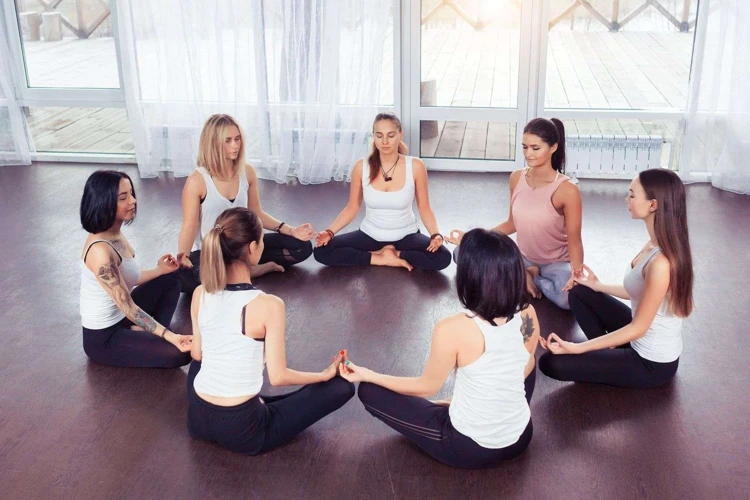
As with any new practice, embarking on a Kundalini Meditation journey comes with its own set of unique challenges. These can range from maintaining a consistent practice to overcoming physical discomfort or mental blocks. However, it’s essential to remember that these obstacles are normal and can be overcome with patience, persistence, and the right mindset. In this section, we’ll explore some common challenges that you might face during your Kundalini Meditation practice and provide helpful tips for overcoming them. So, let’s dive in and explore how to overcome these potential roadblocks!
Keeping a Consistent Practice
Consistency is key when it comes to Kundalini meditation. Keeping a consistent practice is essential for reaping the benefits of this type of meditation. Here are some tips on how to maintain a consistent practice:
| Tips for Keeping a Consistent Practice |
|---|
| Set a schedule and stick to it. |
| Make it a priority in your daily routine. |
| Start with shorter sessions and gradually increase the length of your meditations. |
| Use guided meditations or attend a class to stay motivated. |
| Track your progress and celebrate your accomplishments. |
It can be challenging to find the motivation to meditate every day, but remember the benefits of Kundalini meditation and how they can positively impact your life. By making meditation a consistent part of your daily routine, you will soon begin to notice its transformative effects on your mind, body, and spirit.
Coping with Physical Discomfort
It’s not uncommon to experience physical discomfort during Kundalini meditation, especially if you’re a beginner. However, there are ways to cope with it and continue your practice.
1. Adjust your posture: One of the reasons for physical discomfort during meditation can be improper posture. Make sure you sit in a comfortable position that allows for a straight spine and relaxed shoulders. You can try sitting on a cushion or a folded blanket to elevate your hips and make it easier to sit for longer periods.
2. Take breaks: Don’t push yourself too hard and take breaks if needed. You can stretch or walk around for a few minutes before returning to your practice.
3. Incorporate gentle movement: Kundalini yoga incorporates movement and stretches, which can help release tension in your body. You can try incorporating some gentle movement into your meditation practice, like neck rolls or shoulder shrugs to help alleviate any physical discomfort.
4. Use props: If you’re having trouble sitting for long periods, you can use props like a meditation bench, blocks, or blankets to support your body and make it more comfortable.
5. Practice self-compassion: Remember that discomfort is normal, especially if you’re just starting out. Be gentle with yourself and avoid pushing yourself beyond your limits. It’s better to take it slow and steady than to risk injury or burnout.
By using these strategies, you can help minimize physical discomfort during your Kundalini meditation practice and continue to reap the benefits of this powerful practice.
Working with Resistance or Mental Blocks
At some point during your Kundalini meditation practice, you may encounter resistance or mental blocks. This is completely normal and can happen for a variety of reasons, such as past traumas, limiting beliefs, or simply a lack of focus. It’s important to acknowledge these challenges and work through them in order to continue your journey towards greater self-awareness and inner peace.
Here are some tips for working with resistance or mental blocks during Kundalini meditation:
- Observe without judgment: When you encounter resistance or mental blocks, try to observe them without judgment. Recognize that these thoughts or emotions are simply passing through and do not define you.
- Focus on the present moment: Instead of getting caught up in negative thoughts, focus on the present moment. Pay attention to your breathing, the sensations in your body, and the sounds around you.
- Set an intention: Setting an intention before your meditation practice can help you stay focused and motivated. Choose a positive affirmation or goal that resonates with you and repeat it silently throughout your practice.
- Breathe deeply: Deep breathing can help calm the mind and release tension in the body. Take slow, deep breaths and focus on the sensation of air moving in and out of your lungs.
- Journal your thoughts: Writing down your thoughts and feelings can help you process them and gain a better understanding of yourself. After your meditation practice, take some time to jot down any insights or revelations that arose.
- Be patient and persistent: Overcoming resistance or mental blocks takes time and practice. Don’t get discouraged if you don’t see immediate progress. Keep showing up for yourself and trust that you are making progress.
Remember, Kundalini meditation is a journey and there will be ups and downs along the way. The important thing is to stay committed to your practice and remain open to the experience. With patience, persistence, and a willingness to work through challenges, you can reap the many benefits of this powerful form of meditation.
Tips For a Successful Kundalini Practice
As you embark on your Kundalini meditation journey, there are certain tips and practices that can help make the experience more successful and fulfilling. These tips range from listening to your body and connecting with a Kundalini community to being present and grateful in each session. In this section, we will explore some of these tips in more detail and offer insights into how you can integrate them into your daily routine. By following these tips, you can deepen your practice and enjoy the benefits of Kundalini meditation on a whole new level.
Listen to Your Body
One of the most important things to remember when practicing Kundalini meditation is to listen to your body. This means paying attention to any physical sensations or discomfort that may arise during your practice.
To help with this, it can be helpful to create a physical sensations inventory. This is a simple table that allows you to log any physical sensations you experience before, during, or after your practice. By doing this, you can begin to identify patterns in your body and better understand what works best for you.
Here is an example of how to create a physical sensations inventory:
| Physical Sensation | Intensity (1-10) | When did it occur? |
|---|---|---|
| Tension in shoulders | 6 | During meditation |
| Tingling in palms | 3 | Before meditation |
| Slight headache | 2 | After meditation |
By regularly checking in with your body and logging any physical sensations, you can start to make small adjustments to your practice as needed. For example, if you notice that you always experience tension in your shoulders during meditation, you may want to adjust your posture or try some gentle stretches before your practice.
Additionally, it’s important to respect your physical limits and not push yourself too hard. This means taking breaks when needed, modifying poses to fit your body, and not comparing yourself to others. Remember that everyone’s body is different and what works for one person may not work for another.
Listening to your body can help you have a safer and more effective Kundalini meditation practice.
Connect with a Kundalini Community
One way to enhance your Kundalini meditation practice is by connecting with a community of fellow practitioners. This can provide a supportive environment where you can learn from others, receive guidance, and stay motivated. Here are some ways to connect with a Kundalini community:
| Attend Kundalini classes or workshops | Many yoga studios and wellness centers offer Kundalini classes or workshops. This is a great opportunity to connect with like-minded individuals and learn from experienced teachers. |
| Join a Kundalini meditation group | There are many online and in-person Kundalini meditation groups where you can connect with others who share your interest. These groups can provide a supportive and encouraging environment to help you stay committed to your practice. |
| Participate in Kundalini retreats | Kundalini retreats offer a more immersive experience where you can deepen your practice and connect with a community of like-minded individuals. These retreats often include workshops, classes, and guided meditations led by experienced teachers. |
Connecting with a Kundalini community can be a great way to stay inspired and motivated on your meditation journey. By learning from others, sharing your experiences, and supporting each other, you can enhance your practice in ways you never thought possible.
Be Grateful and Present
A key aspect to incorporating Kundalini meditation into your daily routine is to practice gratitude and presence in your life. By being thankful for what you have and remaining present in the moment, you can access a sense of inner peace and contentment that can greatly enhance your overall well-being. Here are some ways you can cultivate gratitude and presence in your Kundalini practice:
- Start the day with gratitude: Before you begin your morning meditation, take a moment to reflect on the blessings in your life. You can mentally or physically list a few things you are thankful for, such as your health, loved ones, or a safe home.
- Practice mindfulness: Throughout the day, pay attention to your surroundings and your senses. Notice the taste, texture, and smell of your food or take a few deep breaths and notice the sensation in your body. This can help you stay present and mindful throughout the day.
- Focus on positive thoughts: When negative thoughts come up, try to reframe them into positive ones. For example, if you start to worry about a work project, focus on the satisfaction and pride you will feel when it is completed instead of the stress it may cause.
- Express gratitude to others: Take opportunities to express thankfulness to the people in your life. Send a thank-you note, call a friend to express appreciation, or simply express gratitude through a smile or a compliment.
- End the day with reflection: Before falling asleep, take a few moments to reflect on the day. Think about what you are grateful for and what moments brought you joy. This can help you end the day on a positive note and can set the tone for a peaceful night’s rest.
By incorporating gratitude and presence into your Kundalini practice, you can create a positive mindset that can lead to greater peace and fulfillment in your life.
Conclusion
As you start your journey with Kundalini meditation, it is important to remember that it is a powerful tool for self-improvement and personal growth. The benefits of Kundalini meditation can be felt both on a physical and emotional level, with increased awareness, reduced stress and anxiety, and improved physical health being just a few of the many benefits.
It is important to incorporate these practices into your daily routine to reap the full benefits of Kundalini meditation. Set intentions, focus on your breath, and find a comfortable place to sit for short daily sessions. Don’t worry about doing it perfectly, rather be open to the experience.
Challenges may arise during your practice, such as keeping a consistent practice, coping with physical discomfort, or working with resistance or mental blocks. However, listening to your body, connecting with a Kundalini community, and being grateful and present can help you overcome these challenges.
Remember, Kundalini meditation is a journey, and with consistent practice and an open mind, you can experience profound personal growth and transformation. So start your journey today, and embrace the power of Kundalini meditation in your daily life.
Frequently Asked Questions
How long should a Kundalini meditation session last?
It’s recommended to start with shorter sessions, around 10-15 minutes, and gradually increase the duration as you become more comfortable with the practice.
What’s the best time of day to meditate?
There’s no best time to meditate; it depends on your schedule and personal preference. Many find that morning and evening sessions work well for them.
Do I need to have prior experience with meditation to practice Kundalini?
No, Kundalini meditation is suitable for beginners and experienced meditators alike. Just be open to the experience and start with shorter sessions.
Can Kundalini meditation be practiced without a teacher present?
Yes, Kundalini meditation can be practiced on your own. However, it’s recommended to initially learn from an experienced teacher to ensure proper alignment and technique.
What should I wear when practicing Kundalini meditation?
Wear comfortable clothing that allows for ease of movement. Loose-fitting clothes made from natural fibers like cotton are ideal.
Do I need any special props or equipment to practice Kundalini meditation?
No, you don’t need any special props or equipment. However, a meditation cushion or blanket can provide extra comfort during your practice.
Can Kundalini meditation be practiced outside?
Yes, Kundalini meditation can be practiced outside. Just make sure to find a quiet and comfortable spot where you won’t be disturbed.
What if I can’t sit still during meditation?
It’s common to experience restlessness and discomfort during meditation, especially in the beginning. Experiment with different seating positions and guided meditations to find what works for you.
Can Kundalini meditation help with physical pain?
Yes, Kundalini meditation has been found to help alleviate physical pain and improve overall physical health.
Is Kundalini meditation suitable for children?
Kundalini meditation can be a beneficial practice for children, but it’s recommended to find an experienced teacher who specializes in children’s meditation.

